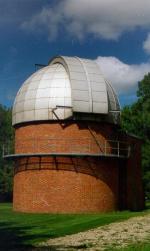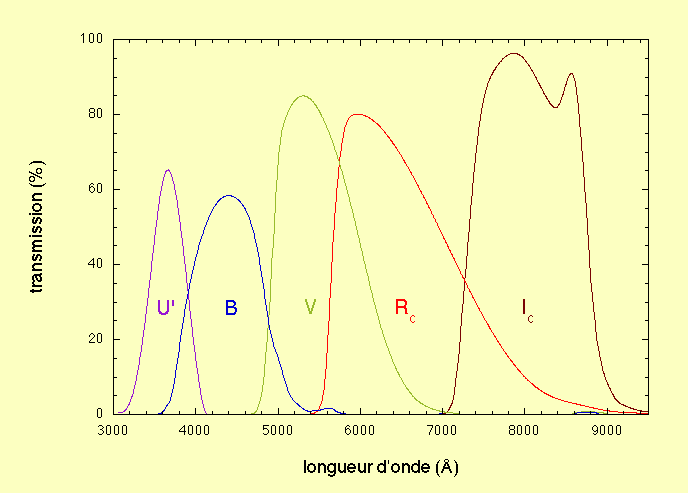| Warner and Swasey Observatory |
| Case Western Reserve University | Nassau Station |
| Visitors |
|
» Home » News » Gallery » Reference » Weather |
| Science Resources |
|
» NSRT User Interface » Software » Data Archive » Download Data |

|
 |
Photometry gives the direct measurement of the energy output of stars at stellar wavelengths.
Apparent Magnitude is the relative brightness of a star (or other stellar object) as viewed from the Earth. The lower the magnitude, the brighter the star. Sirius, the brightest star, has an apparent magnitude of -1.46, while the faintest stars visible to the naked eye have magnitudes of about 6. A difference of five magnitudes between two objects is a factor of 100 in brightness. The apparent brightness of a star depends on two factors: its actual brightness, and its distance from the Earth.
Absolute Magnitude measures the actual brightness of a star, so the distance of the star from the Earth is needed. The absolute magnitude reflects the true amount of light, and therefore energy, emitted by the star.
UBVRI System is the system of filters used to measure the magnitudes of stars. Each filter lets in light of a certain wavelength range, so that the star's light output over that range can be measured. The filters and their wavelengths are:
- U - Ultraviolet - 3500 Angstroms
- B - Blue - 4400 Angstroms
- V - Visual - 5500 Angstroms
- R - Red
- I - Infrared
The star's magnitude can be measured through one of these filters, so that its light output, and therefore energy output, at a certain frequency can be measured.
Frequency and wavelength are inversely related, so the higher the frequency of something, the shorter its wavelength.
Here is a graph showing the wavelengths covered by each filter, and how sensitive they are at each wavelength.

Color Index is the measure of the true color of an object. This is done by determining the object's magnitude through two different filters -- the U and the B, or the B and the V. The two magnitudes are then subtracted, and the lower the color index (it is usually negative), the bluer the star. For example, the star Sirius has a magnitude of -1.46 in the Blue filter, and -1.5 in the Ultraviolet filter. Its U-B color index is therefore (-1.5) - (-1,46), or -0.04. It is a blue star, and it outputs more light and energy in the ultraviolet range than in the blue range.
Created by Rebecca Stanek, January 18, 1999.
©1997, 1998, 1999 CWRU Astronomy Dept.
comments
Last modified Jan 19, 1999
Case Western Reserve University